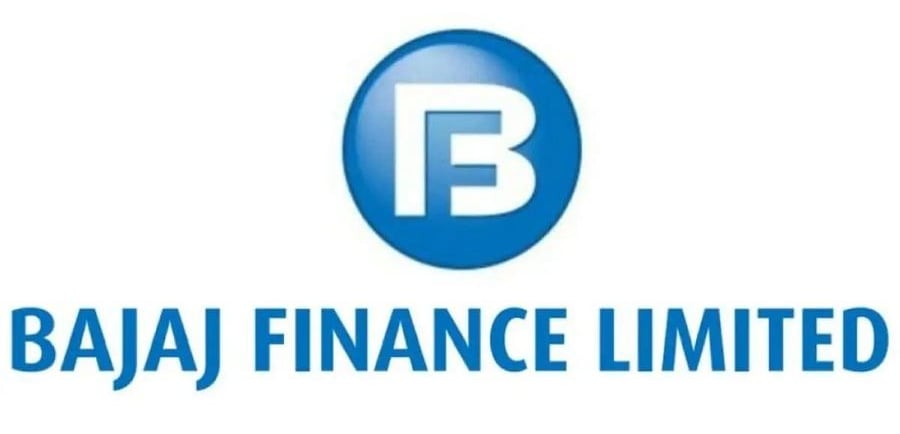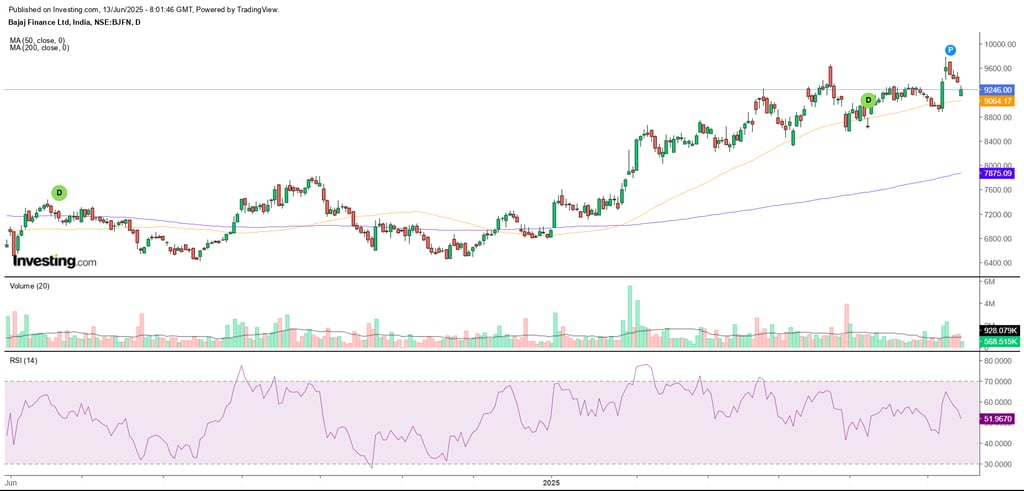Bajaj Finance
Bajaj Finance stock analysis
STOCK ANALYSIS
6/13/20253 min read


Bajaj Finance Limited is one of India’s top non-banking financial companies (NBFCs) and is part of the Bajaj Finserv group. Based in Pune, it serves over 100 million customers and manages assets worth around ₹4.16 lakh crore. The company offers many financial products like personal loans, business loans, gold loans, deposits, and wealth management. It has a wide reach with nearly 800 branches and more than 33,000 distribution points across cities and rural areas.
Company Insights
The company has a market capitalization of 5,73,299 crores
The share price of the company is 9,226
The book value of the company is 1,556
The company's debt-to-equity ratio is 3.74
The company's annual dividend yield is 0.09%
The company's stock P/E is 34.5
The earnings per share are 268
The company's ROCE is 11.3%
Financial Report
The company's sales in the last 5 years
Sales in 2021 is 26,673 crores
Sales in 2022 is 31,641 crores
Sales in 2023 is 41,411 crores
Sales in 2024 is 54,972 crores
Sales in 2025 is 69,684 crores
The company's profit in the last 5 years
Profit in 2021 is 4,420 crores
Profit in 2022 is 7,028 crores
Profit in 2023 is 11,508 crores
Profit in 2024 is 14,451 crores
Profit in 2025 is 16,779 crores
Sales & Profit Growth
The company's sales growth in the last 5 years
Sales growth in the last 5 years is 21.4%
Sales growth in the last 3 years is 30.1%
Sales growth in the last 1 year is 26.8%
The company's profit growth in the last 5 years
Profit growth in the last 5 years is 25.9%
Profit growth in the last 3 years is 33.2%
Profit growth in the last 1 year is 15.1%
Holdings
Promoters are 54.73%
FIIs are 21.45%
DIIs are 14.78%
Government are 0.08%
Public are 8.84%
Others are 0.10%
Company News
Bajaj Finance Ltd has announced a major corporate action involving a 1:2 stock split and a 4:1 bonus share issue, aimed at increasing liquidity and making its shares more accessible to retail investors. Shareholders who own Bajaj Finance shares by the end of trading on June 13, 2025, will be eligible for these benefits. The stock will trade ex-split and ex-bonus starting June 16, 2025.
Under the stock split, each existing share with a face value of ₹2 will be divided into two shares with a face value of ₹1 each, effectively doubling the number of shares held by investors while halving the face value per share. Following this, the company will issue four bonus shares for every one share held, meaning shareholders will receive a total of five shares for each share they own before these actions. For example, an investor holding 50 shares will end up with 250 shares after the split and bonus.
This move comes after Bajaj Finance reported strong financial results for the March 2025 quarter, with a 16% year-on-year rise in consolidated net profit to ₹3,940 crore and a 21% increase in net interest income to ₹8,910 crore. The company’s assets under management have also grown steadily, reflecting robust demand for credit.
Investors are advised to purchase Bajaj Finance shares by June 13 to qualify for the stock split and bonus issue. While the number of shares held will increase significantly, the overall investment value remains the same, with the share price expected to adjust accordingly. This corporate action is seen as a positive step to improve share liquidity and attract more investors to the company’s stock.
Technical Analysis
Company Chart


Moving Averages (MA)
The stock price is just above the 50-MA, which indicates that there is no confirmation of a rise or fall of the stock.
The stock price is above the 200-MA, which indicates that the stock will remain in an uptrend for the long term.
Relative Strength Index (RSI)
The current RSI of the stock is 51, which indicates that the stock is neither in overbought nor in the oversold zone.
My Analysis
The company's sales and profits are increasing every year. Soon, the company's shares will split into 2 for better liquidity, and it will also issue bonus shares to shareholders. The stock price has shown significant increase in recent times, and this trend is likely to continue in the future.
